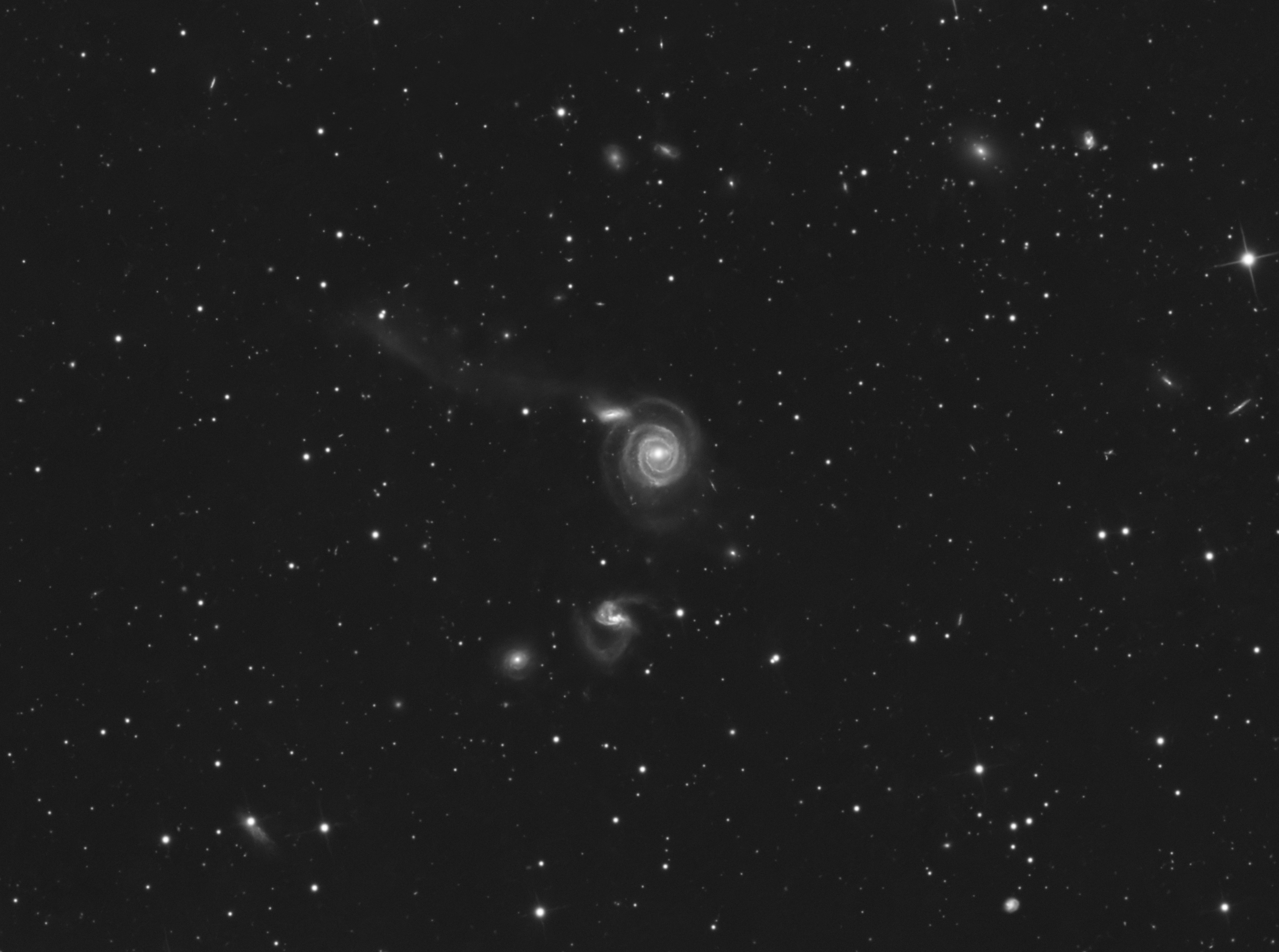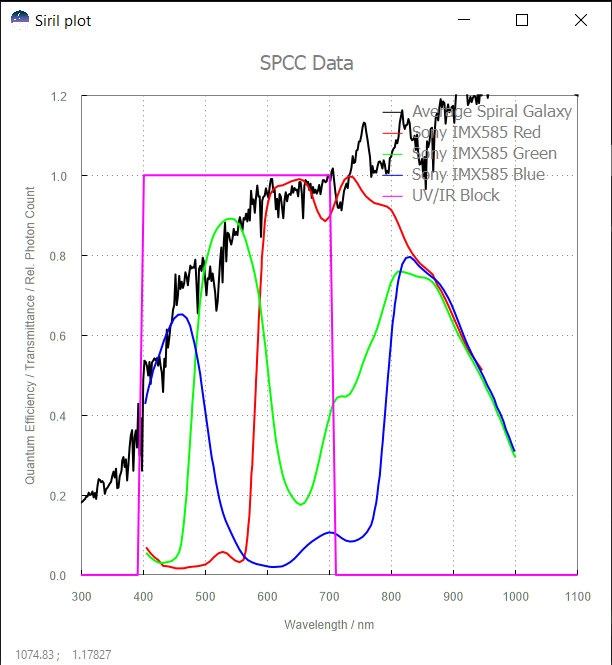Joey Conenna:
The Airy disk (minimum spot size) increases with longer wavelength, so your ability to resolve fine detail will take a hit with that increase in SNR you'd get by picking up NIR signal.
Joey Conenna:
The Airy disk (minimum spot size) increases with longer wavelength, so your ability to resolve fine detail will take a hit with that increase in SNR you'd get by picking up NIR signal.
Thanks Joey, that's a good point.
My scope has 250mm aperture. At 900nm Dawes limit is 0.9".
Isn't it safe to assume that the lower resolving power would be hidden by the seeing ?
Theres actually an offset to this, while the minimum size for the disk is increased, the operational values derived from seeing do not typically approach this value under normal conditions; the FWHM will be more or less averaged out due to the reduced seeing effects on the system in IR up until about 900nm. In many cases with average seeing conditions (1.5-2.2" for my location), the FWHM with IR is typically 1.2-1.6".
Under higher "visible light only" FWHM values, you will actually see decreased total FWHM's due to the averaging of the seeing when IR is included. IR seeing reduction is about .2-.3" most commonly.
This offset in FWHM minimum values only becomes an issue when seeing supports values lower than the minimum resolution provided by IR.
Shooting with IR itself, at least with my system, the minimum FWHM is about 1.15", Even on superb nights where in visible it would show 0.9", it cannot go below the aforementioned 1.15", but when imaging IR on average nights, I can collect data that can supplement good night's visible spectra data quite well due to the reduced seeing effect.
IR above 750nm is quite hit-or-miss to be honest, you begin to wander into larger wavelengths, structures in objects change (sometimes dramatically), and the transparency of the atmosphere becomes a roadblock itself.
The sweet spot for IR pass filters are found in the Bessel I or Sloan i' bands.
My suggestion is to actually shoot "luminance" using one of these IR filters, or any other reasonably good IR pass (There are issues with halos on most cheaper IR pass filters- it's extremely bad, Baader 685+ IR pass is about a baseline for where quality IR filters start), and both using it as L, and soft-adding it to the R channel in post processing.
I've found clear-glass imaging to be fun, albeit with an OSC, my stars end up slightly washed out color wise.


